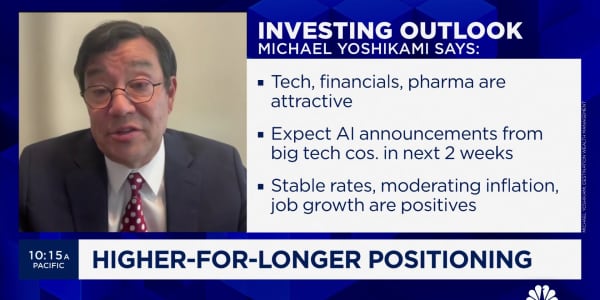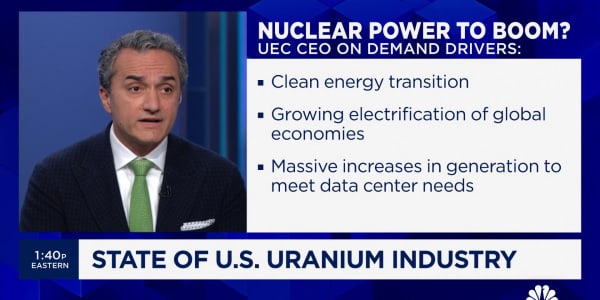It's hardly surprising to hear that some of the largest derivatives brokerages are looking to set up futures exchanges. A huge portion of the traditional business these brokers did is in the process of migrating out of swaps and into futures.
The driver here is financial reform. The actual rules are still being worked out by regulators at the CFTC and will likely run hundreds of pages. But the main things the Dodd-Frank bill did was require that standardized swaps be traded on exchanges, be cleared through clearing houses, and be subject to regulatory supervision. In other words, standardized swaps wind up being a lot like futures.
"Once these 3 things are done, standardized and standardizable swaps become virtually indistinguishable from futures type contracts," MIT economist John Parsons explains on his blog, Betting the Business.
Another thing driving the flight to futures is the fear of being tagged as a swaps dealer. A CFTC rule that went into effect in October requires that anyone who trades more than $8 billion of swaps a year be treated as a swaps dealer for regulatory purposes, which means government audits and capital requirements. So if you were an airline or a hedge fund or an energy company doing a lot of swaps trading, you went scrambling to find a futures contract to take the place of a swap.
There's also the collateral difference. The CFTC now requires traders to post margins equal to five days worth of maximum potential trading losses for interest rate swaps and credit default swaps. If you use futures contracts, however, you only need to post collateral worth one or two days of potential losses.
Finally—and most importantly—there's Basel III. Under the new capital requirements, it is substantially more attractive to use futures for risk management than swaps. When the CME group looked at this it found that the Basel III capital requirements for a cleared plain vanilla interest rate swap with a 2-year maturity and a notional size of $10 million would be $87.92 for the paying fixed side of the swap and $148.93 for the receiving fixed side of the swap. By contrast, getting the equivalent interest rate protection with a futures contract would require just $61.02 of capital. (As always, capital requirement math is complex and boring but here's a link to the CME paper if you are really curious.
The flight to futures has already happened in energy, where a large part of natural gas and the electric power market has jumped from swaps to futures. Interest rate futures are being offered by the CME Group and Eris Exchange. IntercontinentalExchange will soon roll out credit index futures—that is, futurized credit default swaps.
This is a bit frightening if only because this wasn't something anyone really understood would happen. It looks obvious and inevitable now but no one voting for Dodd-Frank ever said: "Hey! Let's do a de facto elimination of standardized swaps and give lots of business to the big futures exchanges." This is, if not totally unforeseen, at least an unintended consequence of Dodd-Frank.
This means that the implications of the change—which, again, is happening very quickly—are not well thought out. For one thing, it appears to increase the market power of the major futures exchanges. Centralization and concentrated market power are sources of fragility in a financial system.
Robert Litan, the director of research at Bloomberg Government, pointed to one specific problem in his ground-breaking note on the futurization of swaps.
Dodd-Frank has created other regulatory differences between swaps and futures, with more user protections for swaps than futures. One area of attention involves segregation of customer funds, which has been inadequate in the futures arena, as demonstrated in the failure of MF Global. If credit default and interest rate swaps can be easily cross-dressed as futures, these other business-conduct protections (such as those applying to "special entities" such as schools and municipalities which in the past have been victimized by interest rate swaps that were ill-suited for these customers) will prove meaningless.
Litan also points out there is less transparency in futures pricing than there would have been on the swaps exchanges Congress mandated in Dodd-Frank. The futures exchanges claim to own the pricing information, which means it isn't freely available to the public. What's more, a lot of the trading in futures is done over the phone, outside of the transparent exchange book. This means that the same problems of price opacity that Congress was trying to address by moving derivatives to exchanges will persist.
And then there's this:
Dodd-Frank encouraged competition in the swaps market by allowing contracts to be executed and cleared at different companies. For example, a swap bought on Tradeweb could be cleared at LCH.Clearnet Group Ltd., CME Group or Intercontinental.
In contrast, futures trading and clearing can only be done at the same company, allowing Intercontinental and CME Group to wall off their energy clearing from rivals.
So we end up in a world with less collateral and less capital, less transparency, less investor protection, more concentration of risk, and a huge unanticipated market transformation. All in the name of regulating swaps.
Follow me on Twitter @Carney






